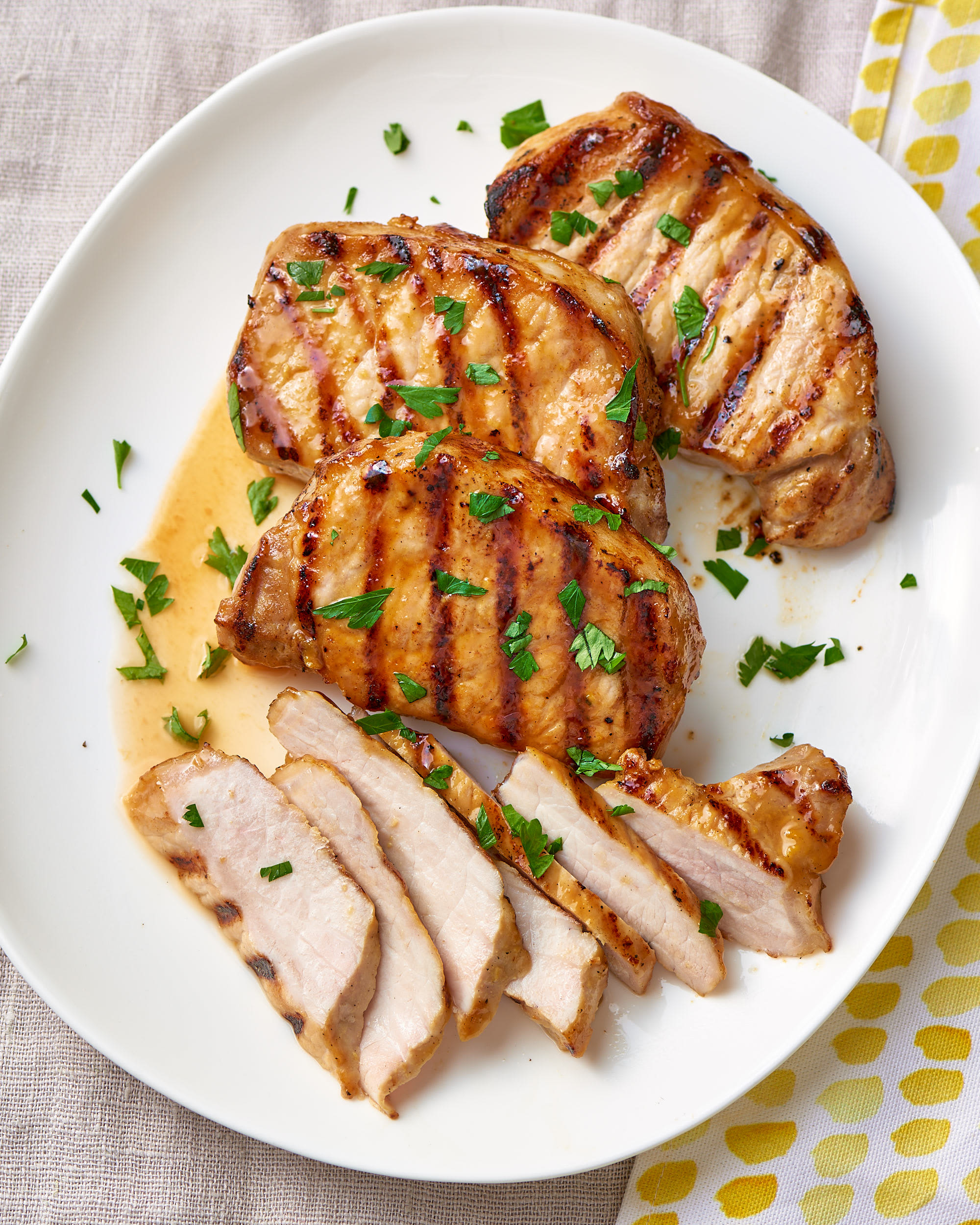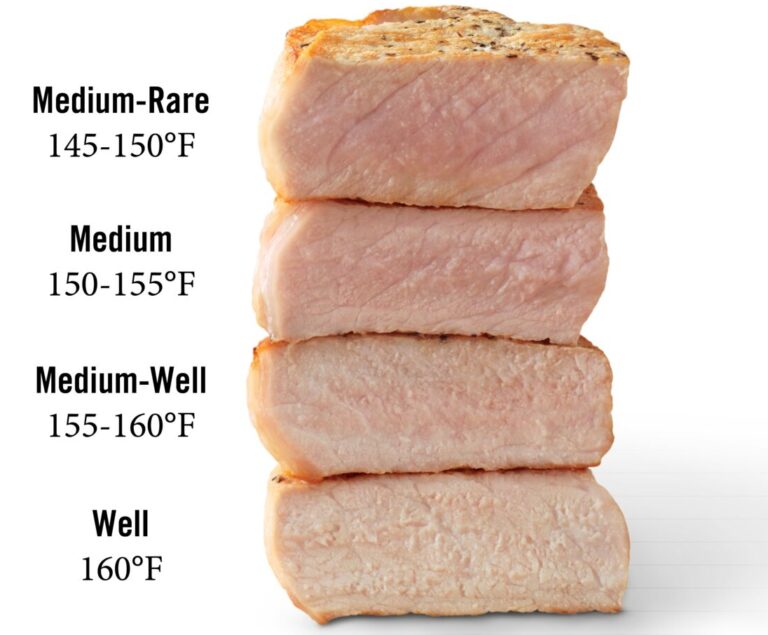Cooking pork chops to the right temperature is essential for both flavor and safety. Whether you're a seasoned chef or a beginner in the kitchen, understanding the ideal temperature ensures your pork chops are juicy, tender, and safe to eat. This guide will walk you through everything you need to know about cooking pork chops perfectly every time.
Many home cooks often struggle with determining the correct temperature for pork chops. Overcooking can result in dry, tough meat, while undercooking poses health risks. By mastering the art of temperature control, you can elevate your culinary skills and enjoy delicious, restaurant-quality pork chops at home.
Our focus in this article is to provide detailed insights into the ideal temperature for pork chops, along with practical tips and techniques. Whether you're using a stove, oven, grill, or slow cooker, we'll cover all the essential aspects to ensure your pork chops are cooked to perfection.
Table of Contents
- Understanding Pork Chops
- Temperature Guidelines for Pork Chops
- Cooking Methods for Pork Chops
- Food Safety Concerns
- Equipment Needed for Perfect Results
- Tips for Enhancing Flavor
- Common Mistakes to Avoid
- The Sous Vide Method
- The Importance of Resting Pork Chops
- Conclusion and Final Thoughts
Understanding Pork Chops
What Are Pork Chops?
Pork chops are a popular cut of meat derived from the loin of a pig. They come in various types, including bone-in, boneless, rib chops, and blade chops. Each type has its own texture and flavor profile, making them versatile for different cooking methods. The key to cooking pork chops lies in understanding their structure and the ideal temperature for optimal results.
Types of Pork Chops
- Bone-In Pork Chops: Offer more flavor and juiciness due to the bone's natural moisture retention.
- Boneless Pork Chops: Easier to cook evenly but require careful attention to prevent drying out.
- Rib Chops: Known for their rich marbling and tenderness.
- Blade Chops: Heavier and more flavorful, often requiring longer cooking times.
Knowing the type of pork chop you're working with is crucial in determining the best cooking method and temperature.
Temperature Guidelines for Pork Chops
The USDA recommends cooking pork chops to an internal temperature of 145°F (63°C), followed by a three-minute rest period. This ensures the meat is safe to consume while maintaining its juiciness and flavor. However, personal preferences may vary, and some cooks prefer slightly lower or higher temperatures depending on the desired level of doneness.
Ideal Temperature for Different Doneness Levels
- Medium-Rare: 135°F (57°C)
- Medium: 145°F (63°C)
- Medium-Well: 150°F (66°C)
- Well-Done: 160°F (71°C)
It's important to note that cooking pork chops to temperatures below 145°F may not eliminate potential bacteria, while exceeding 160°F can lead to dryness. Balancing safety and taste is key to achieving the perfect pork chop.
Cooking Methods for Pork Chops
Pan-Seared Pork Chops
Pan-searing is one of the most popular methods for cooking pork chops. Start by heating a heavy-bottomed skillet over medium-high heat. Add oil, then sear the chops for 3-4 minutes per side until golden brown. Use a meat thermometer to ensure they reach the desired internal temperature.
Oven-Baked Pork Chops
Baking pork chops in the oven is a hands-off method that produces evenly cooked results. Preheat your oven to 400°F (200°C), sear the chops in a skillet, then transfer them to the oven for 10-15 minutes. This method is ideal for bone-in chops, as it helps retain moisture.
Grilled Pork Chops
Grilling adds a smoky flavor to pork chops and is perfect for outdoor cooking. Preheat your grill to medium-high heat, oil the grates, and cook the chops for 4-6 minutes per side. A grill thermometer can help ensure they reach the correct internal temperature.
Food Safety Concerns
Food safety is paramount when cooking pork chops. Undercooked pork can harbor harmful bacteria such as salmonella and E. coli, which can cause foodborne illnesses. Always use a meat thermometer to verify the internal temperature and avoid relying solely on visual cues.
Tips for Safe Pork Handling
- Wash your hands and utensils thoroughly after handling raw pork.
- Use separate cutting boards for meat and vegetables to prevent cross-contamination.
- Refrigerate leftover pork chops within two hours of cooking.
By following these guidelines, you can ensure your pork chops are both delicious and safe to eat.
Equipment Needed for Perfect Results
Meat Thermometer
A meat thermometer is an essential tool for cooking pork chops. Digital thermometers provide quick and accurate readings, ensuring your chops are cooked to the desired temperature. Instant-read thermometers are particularly useful for checking the internal temperature without overcooking.
Cooking Utensils
- Heavy-bottomed skillet for even heat distribution.
- Tongs for flipping the chops without piercing the meat.
- Grill brush for cleaning the grates before cooking.
Investing in quality equipment can significantly improve your cooking experience and results.
Tips for Enhancing Flavor
Marinating Pork Chops
Marinating pork chops before cooking can add depth of flavor and tenderness. A simple marinade of olive oil, garlic, herbs, and lemon juice can transform plain pork chops into a flavorful dish. Allow the chops to marinate for at least 30 minutes or overnight for best results.
Seasoning Techniques
- Use a blend of spices such as paprika, cumin, and chili powder for a smoky kick.
- Apply a generous amount of salt and pepper for a classic seasoning.
- Experiment with rubs or glazes for added flavor complexity.
Proper seasoning can elevate the taste of your pork chops and make them stand out.
Common Mistakes to Avoid
Even experienced cooks can make mistakes when cooking pork chops. Here are some common pitfalls to avoid:
Overcooking
Overcooking pork chops can result in dry, tough meat. Always use a meat thermometer to ensure they reach the desired temperature without going overboard.
Not Letting Them Rest
Resting the pork chops after cooking allows the juices to redistribute, resulting in a juicier final product. Let them rest for at least three minutes before serving.
Using Low Heat
Cooking pork chops on low heat can lead to uneven cooking and a lack of browning. Use medium-high heat to achieve a nice sear and lock in the juices.
The Sous Vide Method
Sous vide cooking involves sealing pork chops in a vacuum bag and cooking them in a water bath at a precise temperature. This method ensures even cooking and maintains juiciness. After sous vide cooking, finish the chops with a quick sear to add flavor and texture.
Benefits of Sous Vide
- Precise temperature control for consistent results.
- Enhanced juiciness and tenderness.
- Minimal risk of overcooking.
While sous vide requires specialized equipment, it offers unparalleled control over the cooking process.
The Importance of Resting Pork Chops
Resting pork chops after cooking is crucial for retaining their juices. When meat is cooked, the fibers contract and push the juices toward the center. Allowing the chops to rest for a few minutes gives the juices time to redistribute, resulting in a juicier and more flavorful final product.
How to Rest Pork Chops
- Transfer the cooked chops to a cutting board or plate.
- Cover them loosely with aluminum foil to keep them warm.
- Let them rest for 3-5 minutes before serving.
Resting not only improves the texture of the meat but also enhances its overall eating experience.
Conclusion and Final Thoughts
Cooking pork chops to the right temperature is essential for achieving both safety and flavor. By understanding the ideal temperature guidelines, mastering various cooking methods, and following food safety practices, you can consistently produce delicious and juicy pork chops. Remember to use a meat thermometer, season generously, and let the chops rest before serving.
We invite you to share your own tips and experiences in the comments below. For more culinary insights, explore our other articles and discover new ways to elevate your cooking skills. Happy cooking!


